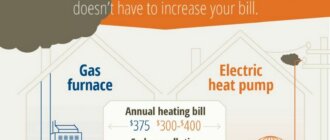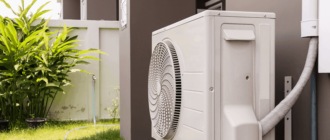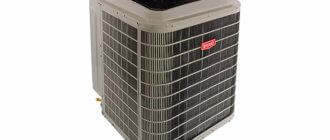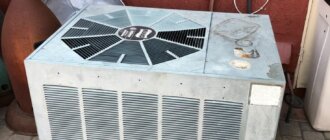Energy Efficiency Tips
Are you tired of paying high utility bills every month? Do you want to save energy and reduce your carbon footprint? Look no further than energy efficiency! By making small changes in your home, you can not only save money but also contribute to a more sustainable future. In this blog post, we will explore the benefits of energy efficiency, define what it means, and provide some helpful tips for making your home more efficient. Let’s get started on your journey towards lower bills and a greener lifestyle!
The importance of energy efficiency
Energy efficiency is an essential aspect of modern living. It refers to the process of using less energy to perform various tasks in our homes, offices, and industries while still achieving the same results. The importance of energy efficiency cannot be overstated as it plays a significant role in reducing carbon emissions and mitigating climate change.
By embracing energy-efficient practices, we can reduce our utility bills significantly. This means that households and businesses can save money while also contributing to environmental conservation efforts. Additionally, adopting energy-efficient practices promotes sustainable development by reducing our dependence on non-renewable sources of energy.
Moreover, with the rising global demand for electricity and the limited availability of resources such as coal and oil, investing in energy efficiency has become increasingly crucial. Energy-efficient buildings have also been shown to promote better health outcomes due to improved indoor air quality resulting from proper ventilation systems.
Promoting energy efficiency should be a top priority for individuals, organizations, and governments alike. By adopting simple measures like using LED bulbs or smart thermostats at home or implementing efficient production processes in industries, we can make significant strides towards creating a more sustainable future for ourselves and generations to come.
Definition of energy efficiency
Energy efficiency is a term that has been gaining more attention in recent years. But what exactly does it mean? In simple terms, energy efficiency refers to the ability of a system or device to use less energy while still providing the same level of performance.
In other words, being energy efficient means reducing unnecessary waste and consumption of electricity, gas, and water by using appliances and systems that are designed to consume less but still function effectively.
There are various ways to measure energy efficiency such as calculating how much fuel is needed for heating or cooling an area per square foot or determining how much electricity an appliance uses when in operation. Energy-efficient practices also help reduce greenhouse gas emissions which contribute significantly towards global climate change.
Improving energy efficiency can lead to lower utility bills while helping conserve natural resources. It’s a win-win situation for both homeowners and the environment alike.
Benefits of energy efficiency
Energy efficiency has become a hot topic in recent years, and for good reason. There are many benefits to making your home more energy-efficient.
Firstly, it can help reduce your utility bills. By using less energy to heat or cool your home, you can save money on electricity and gas bills each month. This means that the initial investment of upgrading appliances or adding insulation will eventually pay off in the long run.
Secondly, energy efficiency helps conserve natural resources such as water and oil. When we use less energy overall, we decrease our reliance on fossil fuels which are finite resources that take millions of years to replenish.
Thirdly, improving energy efficiency also helps reduce greenhouse gas emissions which contribute to climate change. By consuming less power from non-renewable sources like coal-fired power plants, we decrease our carbon footprint and make a positive impact on the environment.
Increased comfort is another benefit of having an energy-efficient home. Proper insulation ensures a consistent indoor temperature throughout the year leading to fewer drafts during winter months leading to improved health outcomes especially for those with respiratory issues as well as better sleep quality due to stable room temperatures at night time.
Energy Efficiency Tips for Your Home
Keeping your home energy-efficient can save you a lot of money on utility bills while also helping the environment. Here are some tips for making your home more energy-efficient.
Tip 1: Energy-Efficient Appliances
When it comes to energy efficiency, one of the best places to start is with your appliances. This is because older appliances can be major energy drainers and account for a significant portion of your utility bills. By upgrading to more energy-efficient models, you can save both money and energy in the long run.
Energy-efficient appliances have been designed to use less electricity or gas than their traditional counterparts while still providing the same level of performance. These types of appliances are typically labeled with an Energy Star rating, which means they meet specific criteria set by the U.S Department of Energy.
When shopping for new appliances, pay attention to their Energy Star ratings as well as any additional features that promote efficiency such as auto-shutoff or power-saving modes. Additionally, consider purchasing smaller-sized models when possible since larger ones tend to consume more electricity.
Investing in energy-efficient appliances may require some upfront costs but will ultimately lead to savings on your monthly utility bills while also helping protect our environment through reduced energy consumption.
Tip 2: Proper Insulation
Proper insulation is crucial for energy efficiency. Insulation helps to keep your home at a comfortable temperature by preventing heat transfer through the walls, floors, and ceilings. This not only saves energy but also reduces utility bills.
A properly insulated home requires less heating and cooling which means that you don’t have to rely on your HVAC system as much. Proper insulation can make a huge difference in keeping your home cool during summer months and warm during winter months without having to crank up the thermostat.
The type of insulation you use is important as well. Some types of insulation are more effective than others depending on where they are installed in the house. For example, spray foam insulation is ideal for filling gaps in walls or ceilings while batt fiberglass may be better suited for attics or crawl spaces.
It’s also important to ensure that your attic has sufficient ventilation because poor ventilation can lead to moisture build-up which can damage both the roof structure and insulation materials over time.
By properly insulating your home, you can save energy and reduce utility bills while creating a more comfortable living environment all year round.
Tip 3: Smart Thermostat
Smart thermostats are the future of home temperature control and can help you save a lot of money on your utility bills. These devices learn your preferences and adjust the temperature accordingly, so you don’t have to constantly fiddle with the thermostat.
One of the biggest benefits of smart thermostats is that they can be controlled remotely using an app on your phone. This means that if you forget to turn off the air conditioning before leaving for work, you can do it from anywhere, ensuring that you’re not wasting energy unnecessarily.
Another benefit is that many smart thermostats come with features like geofencing, which uses GPS tracking to detect when you leave or enter your home. This allows them to automatically adjust the temperature based on whether or not anyone is home.
Smart thermostats often integrate with other smart home devices like Alexa or Google Home, allowing for voice-controlled temperature adjustments. With all these benefits in mind, upgrading to a smart thermostat is definitely worth considering if you want to improve energy efficiency in your home!
Tip 4: Use LED Bulbs
Using LED bulbs is a great way to save energy and reduce your utility bills. These bulbs use less energy than traditional incandescent bulbs, making them more efficient and cost-effective in the long run.
One of the biggest advantages of LED bulbs is their lifespan. They last much longer than other types of light bulbs, which means you won’t have to replace them as often. This not only saves you money but also reduces waste and helps the environment.
Another benefit of using LED bulbs is that they emit very little heat compared to traditional incandescent or halogen lights. This means less strain on your HVAC system during hot summer months when every degree counts.
LEDs are also incredibly versatile and come in many different shapes, sizes, and color temperatures. You can choose warm white or cool white tones depending on your preference or use colored LEDs for an ambient lighting effect.
Switching to LED light bulbs is a simple yet effective way to improve energy efficiency in your home while still enjoying quality lighting. Just remember to properly dispose of old lightbulbs at recycling centers instead of throwing them away with regular trash!
Tip 5: Make Use of Natural Light
Natural light is an excellent way to brighten up your home while saving energy. Allowing natural light into your space reduces the need for artificial lighting, which can help you save on your utility bills. It’s also a great way to boost your mood and increase productivity.
One of the easiest ways to make use of natural light is by opening up blinds or curtains during the day. This will let in plenty of sunshine, providing ambient lighting that will create a warm and inviting atmosphere in any room.
If you have large windows in your home, it’s important to consider how they’re placed. South-facing windows are ideal as they receive sunlight throughout the day, but east or west-facing windows can be problematic if not shielded properly from direct sunlight during certain times of the day.
Another way to maximize natural lighting is by using lighter colors for walls and furniture pieces. Lighter shades reflect more light than darker tones, giving a brighter feel overall even with less illumination available.
By making use of natural light in your home, you’ll be taking steps towards becoming more energy-efficient while creating a comfortable living environment at the same time.
Tip 6: Regular HVAC Maintenance
Regular maintenance of your HVAC system is crucial for optimal energy efficiency. Neglecting this can lead to higher utility bills and even costly repairs in the long run.
One important step is to consistently replace air filters. Dirty filters not only hinder airflow, but also cause your HVAC system to work harder, leading to increased energy consumption. By replacing them regularly (usually every 3 months), you can save up to 15% on your heating and cooling costs.
Another way to maintain your HVAC system’s efficiency is by cleaning the outdoor unit regularly. Dirt and debris that accumulate around it obstruct airflow, making it less efficient in transferring heat or cool air.
Checking and sealing ducts are also essential steps in maintaining an efficient HVAC system. Leaky ducts result in wasted energy as cooled or heated air escapes before reaching its destination.
Scheduling a professional tune-up at least once a year ensures that all components of your HVAC system are operating properly and efficiently. Regular maintenance means better performance from your HVAC system while saving money on energy bills at the same time!
Tip 7: Use Ceiling Fans
One of the simplest and most effective ways to increase energy efficiency in your home is by using ceiling fans. These fans are a great way to save on utility bills without sacrificing comfort.
Ceiling fans work by circulating air throughout the room, which helps to keep you cool during hot summer days and warm during cold winter nights. This means that you can set your thermostat a few degrees higher in the summer and lower in the winter, saving both energy and money.
When using ceiling fans, it’s important to remember that they only work when someone is in the room. So be sure to turn them off when you leave! Additionally, make sure that your fan blades are clean and dust-free for optimal performance.
Another tip for enhancing efficiency with ceiling fans is choosing one with an ENERGY STAR rating. These models use up to 60% less energy than standard ceiling fans while still providing high-quality performance.
Incorporating ceiling fans into your home can significantly reduce energy consumption while also increasing comfort levels. It’s an easy solution that should not be overlooked!
Tip 8: Low-Flow Fixtures
Low-flow fixtures are an excellent way to conserve water and save energy. By reducing the amount of water that comes out of your faucets, showers, and toilets, you can significantly reduce your utility bills.
There are many different types of low-flow fixtures available on the market today. For example, low-flow showerheads use less water than traditional showerheads while still providing a strong stream of water.
Low-flow toilets use less water per flush than standard models but still maintain their effectiveness in keeping your bathroom clean.
Similarly, low-flow faucets also help you conserve water by reducing the flow rate without sacrificing performance. These fixtures work by adding air to the stream so that it feels just as powerful even though there is less volume.
By using these types of fixtures in your home, you can make a significant impact on both your wallet and the environment. So if you’re looking for ways to cut back on consumption while maintaining comfort levels at home, consider investing in some low-flow fixtures today!
Tip 9: Efficient Laundry Practices
Efficient Laundry Practices can help you save energy and money on your utility bills. Firstly, it is important to only do laundry when you have a full load. This way, you maximize the use of water and energy per wash cycle.
Secondly, consider washing your clothes in cold water instead of hot or warm water. About 90% of the energy used by washing machines goes towards heating the water. By using cold water for most loads, you could save a lot on your electricity bill.
Another tip is to air-dry your clothes whenever possible instead of using a dryer machine. Not only does this save energy but also prolongs the lifespan of your clothing items.
Furthermore, try to clean out the lint filter after every dryer cycle as this helps improve airflow and reduce drying time.
Upgrade to an Energy Star-certified washer and/or dryer if possible as these appliances are designed for optimal efficiency with minimal environmental impact while still providing superior cleaning performance.
Conclusion
Energy efficiency is an essential aspect of modern living. By implementing the tips mentioned above, you can save a significant amount on your utility bills while also contributing to environmental conservation efforts. From using energy-efficient appliances and LED bulbs to regular HVAC maintenance and efficient laundry practices, every small step counts towards reducing your carbon footprint.
It’s important to note that these are just a few tips for making your home more energy-efficient. There are numerous other ways of conserving energy and reducing waste in our daily lives. So, let’s all make a conscious effort to adopt eco-friendly habits and promote sustainability for a better future!
Recent Queries:





